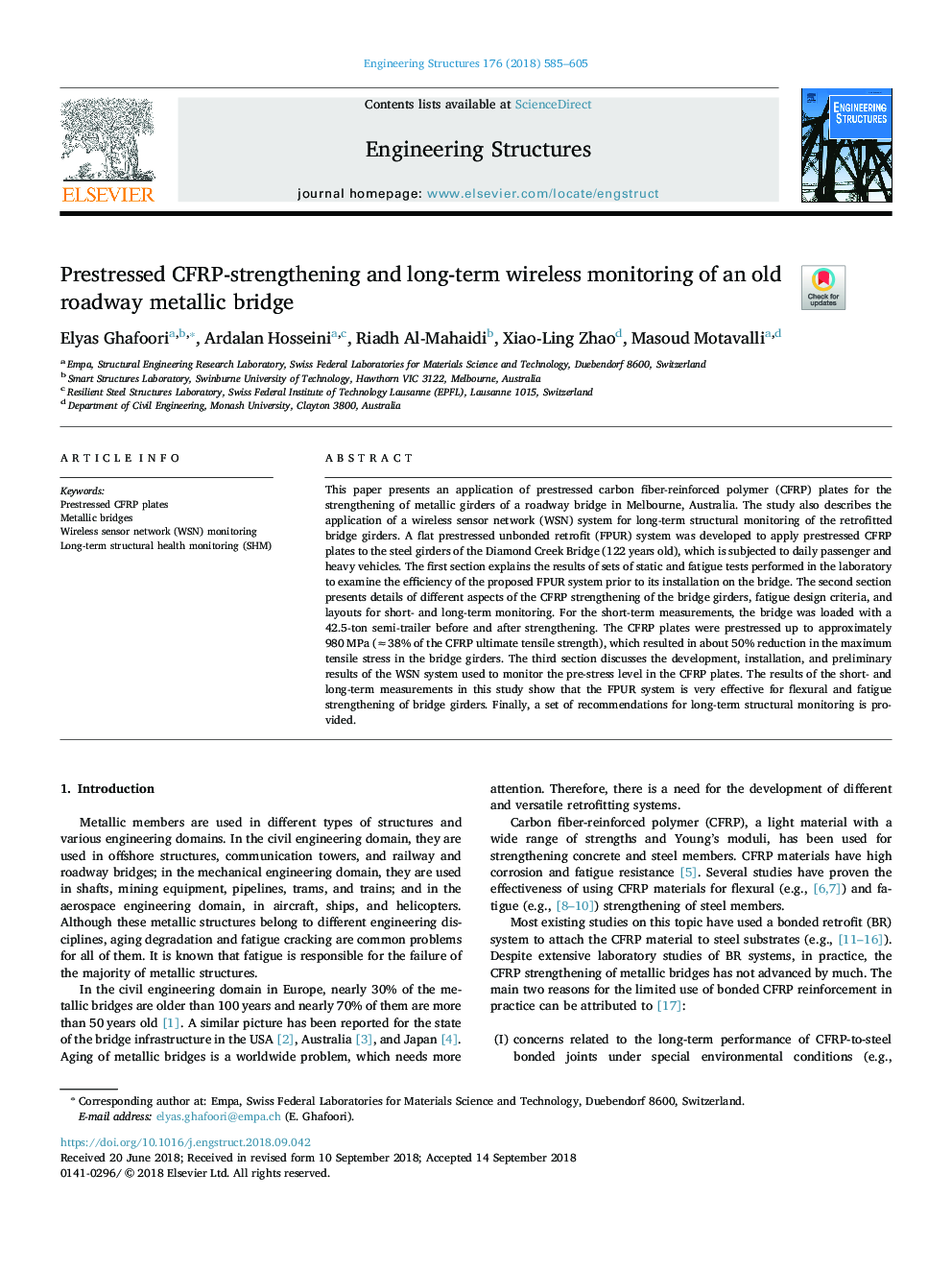| Article ID | Journal | Published Year | Pages | File Type |
|---|---|---|---|---|
| 11028921 | Engineering Structures | 2018 | 21 Pages |
Abstract
This paper presents an application of prestressed carbon fiber-reinforced polymer (CFRP) plates for the strengthening of metallic girders of a roadway bridge in Melbourne, Australia. The study also describes the application of a wireless sensor network (WSN) system for long-term structural monitoring of the retrofitted bridge girders. A flat prestressed unbonded retrofit (FPUR) system was developed to apply prestressed CFRP plates to the steel girders of the Diamond Creek Bridge (122â¯years old), which is subjected to daily passenger and heavy vehicles. The first section explains the results of sets of static and fatigue tests performed in the laboratory to examine the efficiency of the proposed FPUR system prior to its installation on the bridge. The second section presents details of different aspects of the CFRP strengthening of the bridge girders, fatigue design criteria, and layouts for short- and long-term monitoring. For the short-term measurements, the bridge was loaded with a 42.5-ton semi-trailer before and after strengthening. The CFRP plates were prestressed up to approximately 980â¯MPa (â38% of the CFRP ultimate tensile strength), which resulted in about 50% reduction in the maximum tensile stress in the bridge girders. The third section discusses the development, installation, and preliminary results of the WSN system used to monitor the pre-stress level in the CFRP plates. The results of the short- and long-term measurements in this study show that the FPUR system is very effective for flexural and fatigue strengthening of bridge girders. Finally, a set of recommendations for long-term structural monitoring is provided.
Related Topics
Physical Sciences and Engineering
Earth and Planetary Sciences
Geotechnical Engineering and Engineering Geology
Authors
Elyas Ghafoori, Ardalan Hosseini, Riadh Al-Mahaidi, Xiao-Ling Zhao, Masoud Motavalli,
